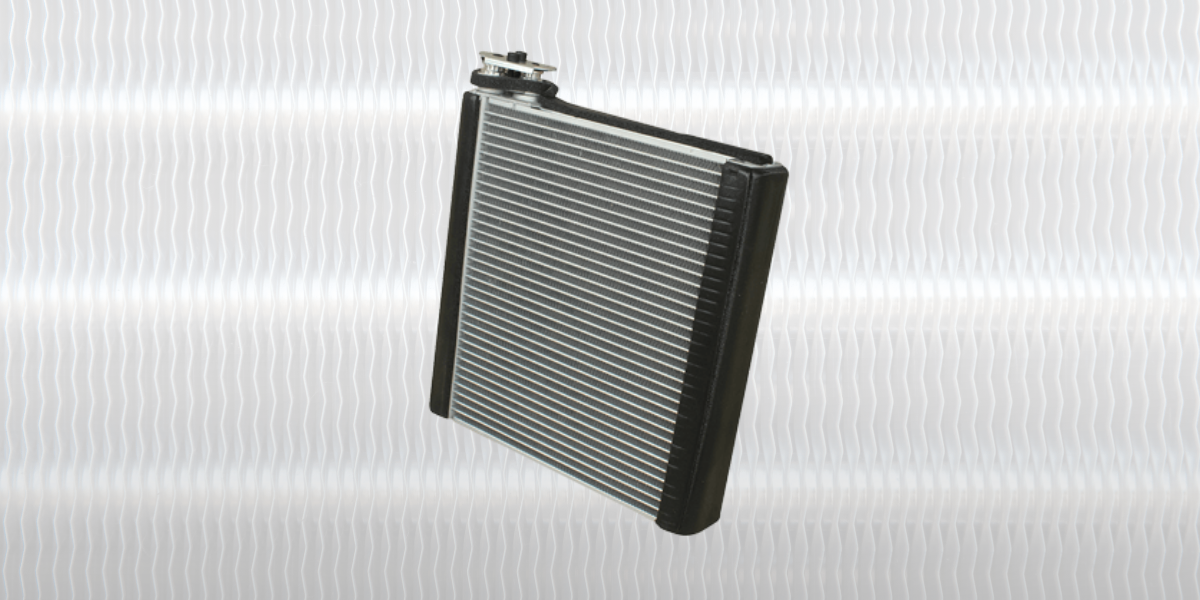What is a Direct Expansion Evaporator & How Does it Work?

A direct expansion evaporator (DX evaporator) is a component found in most HVAC and refrigeration systems. It’s a very important part because it’s where the refrigerant absorbs heat. In this article, we’ll explain what it is, how it works, plus a few things to pay attention to when it comes to design and maintenance.
What is a Direct Expansion Evaporator?
A DX evaporator is a coil where refrigerant evaporates directly inside the tubes. No secondary loop or glycol circuit – the refrigerant absorbs heat from the air (or water) passing over the coil surface. Inside the coil, the refrigerant changes from liquid to vapor as it takes on heat.
(If you’ve opened an air handler and seen a frosted coil, that’s the evaporator doing its job…sometimes a little too well.)
Direct Expansion vs. Flooded Evaporator
A DX evaporator and a flooded evaporator perform the same basic task: they absorb heat so the refrigerant can boil and move heat out of the system. The difference is in how the refrigerant is managed inside the coil.
In a direct expansion evaporator, refrigerant will flow through the tubes and evaporates as it absorbs heat from air or fluid passing over the coil. Only part of the coil surface contains liquid at any moment since the refrigerant boils off as it moves through the tubes. Flow control will happen through an expansion valve that meters refrigerant into the coil based on superheat.
In a flooded evaporator, the entire evaporator surface is submerged in liquid refrigerant. The liquid will stay in contact with the tube walls, giving higher heat transfer rates. A separate vessel and liquid recirculation system keep the tubes flooded while vapor exits from the top. These systems will need more refrigerant charge and more complex oil management, but they deliver better heat transfer and temperature stability.
How a Direct Expansion Evaporator Works
We already touched on how refrigerant flows through a DX coil, but here’s a more detailed look at the sequence:
- Low-pressure liquid refrigerant enters the coil through the expansion valve. The valve controls the flow and drops the pressure.
- Evaporation happens as warm air or fluid passes over the coil surface. The refrigerant absorbs heat and boils into vapor.
- Vapor refrigerant exits the coil and goes to the compressor, where pressure increases before heading to the condenser.
That’s the refrigeration cycle in motion: expansion valve → evaporator → compressor → condenser → back again.
Superheat control is important. If the refrigerant doesn’t fully vaporize before reaching the compressor, liquid slugging can occur. Too much superheat reduces capacity. Balance those values carefully during setup.
(Here’s a tip: check distributor orifice sizing if you see uneven coil performance. It’s often overlooked.)
Design Features
DX coils come in several configurations: microchannel, fin-and-tube, and plate types being the most common.
- Microchannel: high heat transfer, low refrigerant charge, compact, but harder to clean
- Fin-and-tube: flexible design, easy maintenance, proven reliability
- Plate or brazed plate: good for liquid-to-liquid or closed-loop systems
Performance depends on more than geometry. Air velocity, coil face area, and refrigerant distribution across circuits all play a role. Even a small mismatch in circuiting can reduce efficiency.
Material selection also matters: aluminum for lighter weight and corrosion resistance, copper for durability and thermal conductivity. Corrosion coatings can extend coil life in harsh or corrosive environments.
(CS Coil manufactures DX coils with precise circuit design and protective coating options built to system specs.)
Why Use a DX System
- High efficiency due to direct refrigerant contact with the heat transfer surface
- Simplified layout, no secondary fluid loop, fewer components
- Compact size for tight mechanical rooms or packaged units
- Fast response to load changes
- Lower refrigerant charge than flooded systems
All in all, you get solid performance with less complexity!
Common Issues (and How to Fix Them)
Every DX system has weak spots if not designed or maintained properly:
Uneven refrigerant distribution: usually from poor distributor or orifice design. Fix by checking circuit balance
Coil frosting or icing: caused by low airflow or improper defrost control. Always check air velocity and coil cleanliness..
Oil return issues: oil can trap in circuits if piping isn’t sloped or sized correctly. Use proper trap design and suction velocities.
FYI: Good controls and proper installation can prevent most of these issues before they start.
System Types
You’ll find DX evaporators in many types of equipment:
- Rooftop units and split-system air conditioners
- Air handlers and heat pumps
- Refrigeration display cases and walk-ins
- Industrial chillers and process coolers
CS Coil also engineers custom DX coils for OEM systems, built around the refrigerant, capacity, and environmental conditions of the end product.
Work with the Team at CS Coil
CS Coil designs and builds microchannel evaporator coils for many applications. Our team focuses on precise circuit layout, refrigerant compatibility, and materials that balance performance with durability. Each and every coil is built for efficient heat transfer and long service life.
Talk to CS Coil today and ask us about our microchannel coil solutions.